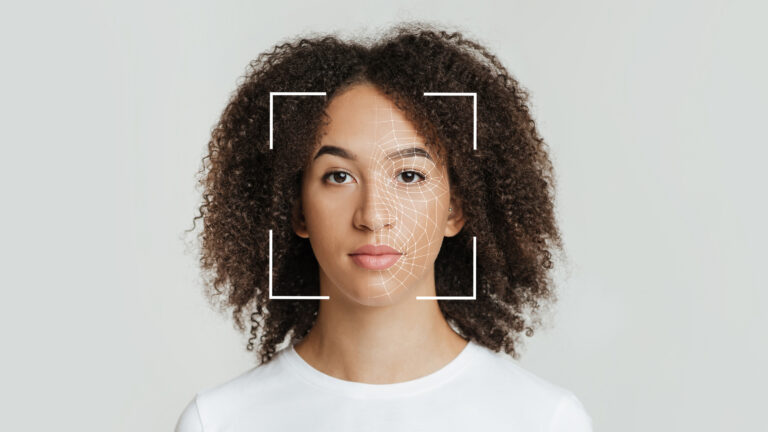Menu

This week I was privileged to be invited to attend roundtable luncheon presented by ConnectID and Ping Identity, with guest speakers David Birch International Keynote Speaker, Published Author, Global Advisor and Investor in Digital Financial Service, Brad Carr, Executive, Digital Governance, National Australia Bank, Andrew Black, Managing Director, ConnectID, Ashley Diffey, Vice President, Asia Pacific and Japan, Ping Identity and moderated by Mark Jones, Award-winning Technology and Business Journalist.
It was a roundtable of ideas that kicked off with the question of ‘where will we be in five years’?
Whilst the discussion proceeded under Chatham House Rules, it is fair to say that the outcome was given the void in leadership from most central governments (including our own) that we need to look at countries that have had success so far with biometrics including India with its ambitious Aadhaar program, Singapore with its SingPass, UAE and the USA that has utilized biometric technologies for border security and law enforcement purposes for some time now.
It was a fascinating two hours and I am sure it could have lasted all afternoon, however ultimately I believe the consensus was that collaboration was the only way forward, and indeed the 15 or so people that attended agreed.
My view is we cant wait for Government we just have to get on with it.
Interestingly some of the discussion cut across my wheelhouse of scam (fraud) mitigation, with one speaker noting that Meta platforms now accounted for 8 out of every 10 scams reported in the UK.
No surprise really given there are 1.6bn new ads placed on Facebook marketplace every month and it has been suggested elsewhere that 6 new scam ads are placed every minute on the Meta platforms.
On the trip back to Queensland it had me thinking how we can get in front of the curve at our company Sell Securely .
We are already integrating a cutting edge digital identification system that ConnectID are rolling out this year, but how how with the help of Ai can we be the most advanced platform of our type globally?
In my research I found that several advancements in biometrics have been made in recent years that i had no idea about.
1. Behavioral Biometrics:
In addition to traditional physiological biometrics like fingerprints and iris scans, behavioral biometrics have gained attention. These include analyzing patterns such as keystroke dynamics, mouse movement, gait analysis, and voice recognition. Behavioral biometrics provide continuous authentication and can detect anomalies in real-time.
2. Facial Recognition:
Facial recognition technology has seen significant advancements. Deep learning algorithms and neural networks have improved accuracy and speed, enabling facial recognition to be used in various applications, including access control, surveillance, and user authentication.
3. Voice Recognition:
Voice biometrics have become more robust and accurate. Advances in machine learning and voice analysis techniques have made voice recognition a viable option for authentication and identity verification, particularly in call centers and voice assistants.
4. Palm Vein Recognition:
Palm vein recognition technology uses near-infrared light to capture the vein patterns within a person’s palm. It offers a high level of accuracy and security, and it is less affected by external factors such as dirt or aging compared to other biometric modalities.
5. Electrocardiogram (ECG) Biometrics:
ECG-based biometrics use the unique electrical signals of an individual’s heart to verify their identity. ECG sensors embedded in wearables or smartphones can capture and analyze these signals, providing a non-intrusive and continuous biometric authentication method.
6. DNA Biometrics:
DNA-based identification is a rapidly evolving field. Advances in DNA sequencing technologies and DNA analysis techniques have opened up possibilities for using DNA as a biometric identifier. However, ethical considerations and privacy concerns surrounding DNA data remain significant challenges.
7. Multimodal Biometrics:
Combining multiple biometric modalities, such as face and fingerprint, or iris and voice, can enhance accuracy and increase security. Multimodal biometric systems provide a more robust and reliable authentication mechanism by leveraging the strengths of different biometric traits.
8. Anti-Spoofing Techniques:
As biometric systems become more prevalent, so do attempts to spoof or deceive them. Anti-spoofing techniques, such as liveness detection, are being developed to detect and prevent spoofing attacks. These techniques can distinguish between live and fake biometric samples, ensuring the integrity of the biometric authentication process.
9. Mobile Biometrics: The integration of biometric sensors into smartphones and other mobile devices has made biometrics more accessible and user-friendly. Mobile biometrics enable convenient and secure authentication for various applications, including mobile payments and mobile banking.
10. Privacy-Preserving Biometrics:
Researchers are actively working on techniques that allow biometric data to be processed and matched without compromising privacy. Privacy-preserving biometric methods, such as secure enclaves, homomorphic encryption, and federated learning, aim to protect users’ sensitive biometric information while still enabling efficient authentication.
These are just a few examples of the current advances in biometrics.
In finishing this piece the field of biometrics is continuously evolving, driven by advancements in technology, machine learning, and data analytics, with a focus on improving accuracy, usability, and security.
So where will we be in five years?
I cant even imagine, however I know that we began our adaption pivot this morning at 10am.
SECURELY HOLDINGS PTY LTD is registered as an independent remittance provider Registration Number IND100809706-001. Copyright 2023 Securely-App All Rights Reserved.
Acknowledgement of Country
The management and staff of Securely Holdings recognises the Kabi Kabi (Gubbi Gubbi), the First Peoples of the land on which we work and reside and their ongoing connection to culture and country. We acknowledge First Nations Peoples as the Traditional Owners, Custodians and Lore Keepers of the world’s oldest living culture and pay respects to their Elders past, present and emerging.